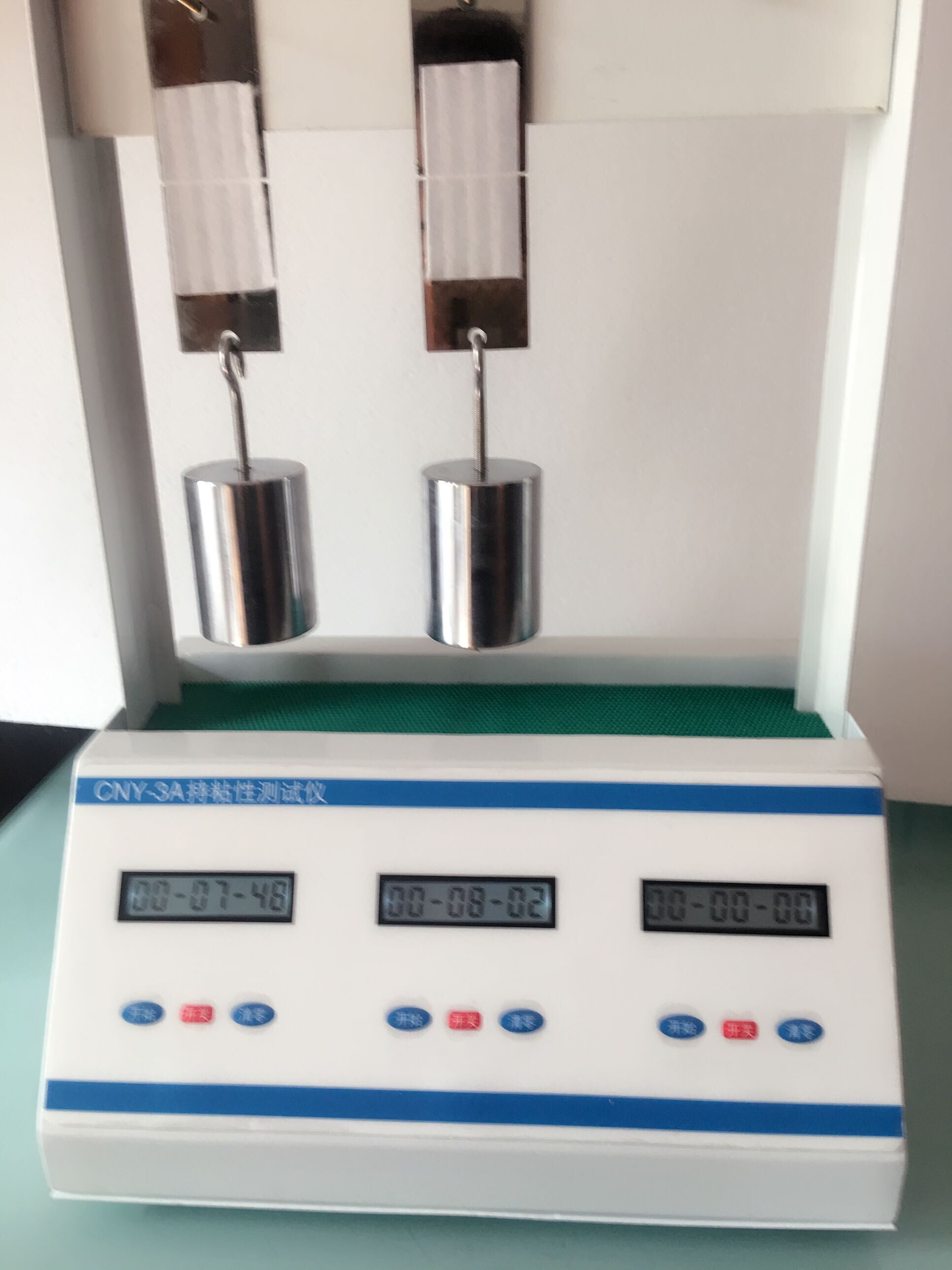How to operate the adhesive tester correctly
Stickiness refers to the amount of retention of the adhesive after it has been applied to the product. The viscous tester is manufactured in accordance with the national standard GB/T4851-1998 of the People's Republic of China, and is suitable for pressure-sensitive adhesive tape and other products for the viscous test. The viscous tester is an indispensable instrument for quality inspection of related companies. The following is a detailed introduction to the correct operation of the viscous tester .
1.1 Working principle: The test plate with the sample attached is vertically hung on the test frame, and the weight of the specified weight is attached to the lower end, and the displacement of the sample after a certain time or the time required for the sample to completely detach is determined. Adhesive tape resists the ability to pull off.
1.2 Instrument structure: mainly composed of timing mechanism, test board, loading board, weight, frame and standard pressure roller.
1.3 technical indicators: weight - 1000 ± 10g (including loading plate weight)
Test plate—60(L)*40(B)*1.5(D)mm (same as loading plate)
Pressure roller load: 2000±50g
Timer - 9999 hours 59 minutes 60 seconds
Station - 3 stations
Net weight - 6kg
Power supply - 220V 50Hz
Dimensions - 300 (L) * 240 (B) * 500 (H) mm

- Method of operation
2.1 Place the instrument horizontally, turn on the power switch, and place the weight in the slot below the hanger.
2.2 Unused stations can be stopped by pressing the “Close†button. Press the “On/Clear†button to re-time.
2.3 After removing the 3 to 5 ring adhesive tape on the outer layer of the adhesive tape test strip, unwind the sample roll at a rate of about 300 mm/min (the release layer is also peeled off at the same rate for the sheet sample). A sample of 25 mm wide and 100 mm long is cut in the middle of the adhesive tape at a distance of about 200 mm. Unless otherwise specified, the number of samples per group is not less than three.
2.4 Wipe the test plate and the loading plate with a wiping material and a cleaning agent, then carefully dry it with a clean gauze, and wash it three times. Above, until the working surface of the board is visually inspected and cleaned. After cleaning, do not touch the working surface of the board with your hands or other objects.
2.5 At a temperature of 23 ° C ± 2 ° C, relative humidity of 65% ± 5%, according to the size specified in Figure 2, the sample is pasted parallel to the longitudinal direction of the plate in the middle of the test plate and the loading plate next to each other. The sample was rolled at a speed of about 300 mm/min with a press roll. Note that when rolling, it can only be applied to the specimen with the force generated from the quality of the press roll. The number of rolling can be specified according to the specific product conditions. If there is no regulation, the rolling is repeated three times.
2.6 After the sample is pasted on the board, it should be placed at a temperature of 23 ° C ± 2 ° C and a relative humidity of 65% ± 5% for 20 min. Then the test will be carried out. The plate is fixed vertically on the test stand, and the load plate and weight are lightly connected by pins. The entire test rack is placed in a test chamber that has been adjusted to the required test environment. Record the test start time.
2.7 After reaching the specified time, remove the heavy objects. Use a graduated magnifying glass to measure the amount of displacement of the sample down to the nearest 0.1 mm; or record the time the sample has fallen off the test panel. The number of times is greater than or equal to 1h, in min, and less than 1h in s.
3 test results
The test results are expressed as the arithmetic mean of the displacement or shedding time of a set of samples.
4 considerations
4.1 This test shall be carried out in full compliance with GB/T4851-1998 and related standards.
4.2 Turn off the power and keep it clean after use. Models are subject to change without notice.
Label: Sticky Tester
B scan:
Frequency: 10MHz/20MHz (optional) ,Magnetic driven, noiseless
Scanning Mode: Sector Scanning
Magnify:Multi continuous magnification,Real-Time magnification
Resolution: Lateral ≤0.3mm;Vertical≤0.2mm
Geometry position precision: Lateral ≤10%;Vertical≤5%
Depth:60mm
Enhance the part of vitreous body and retina
Gain of probe:30dB-105dB
Scanning Angle:53°
Gray Scale: 256
False Color: Multi colors. OCT
measurement type: multigroup distances, perimeters and areas
Image postprocessing: multiple curves processing, Pseudo-color processing curve
Movies: 100 images movie review, AVI JPG format image output
A scan:
Frequency:10MHz, with LED
Depth: 40mm
Precision:±0.05 mm
Measurement: Anterior chamber depth, lens thickness, vitreous body length, total length and average
Eye mode: Phakic / Aphakic / Dense / Various IOL
IOL Formula: SRK-II, SRK-T, HOFFER-Q, HOLLADAY,BINKHORST-II, HAIGIS
Stat. Calculation: Average and standard deviation
Store: 10 Scanning results for each eye
Others:
Display Mode :B.B+B.B+A.A
Hint: preset keyword
Case Search:Multi-keywords
Working Platform: Windows XP.VISTA.WINDOWS7
User-defined report template poor credit secured loans
A/B Ophthalmic Scanner,A/B Eye Scanner,Ultrasound Ophthalmic A/B Scan,Ophthalmic B-Scan Equipment
Guangzhou Sonostar Technologies Co., Limited , https://www.sonoeye.com